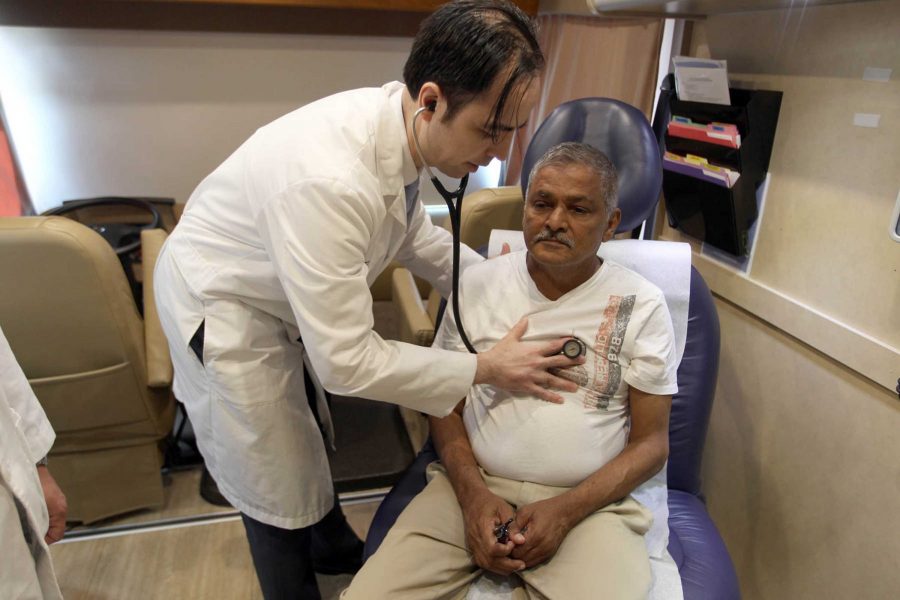As the baby boomer’s years increase, so will their medical demands.
The “boomers,” people born in the United States between 1946 and 1964, outnumber Generation X 77 million to 65 million, according to the Pew Research Center. With the large population of boomers entering retirement, Pitt researchers have published a literature review condensing existing healthcare practices and policies into one place, hoping to make a plan for treating an aging population.
The newly founded Stern Center for Evidence-Based Policy, part of Pitt’s Health Policy Institute, released its first report, “Addressing the Health Needs of an Aging America,” on Sept. 24. The study is one of the first in the country to not only address the changing needs of the aging American population, but also use this information to influence policy related to older citizens. Lawrence Stern, the president of the Lawrence and Rebecca Stern Family Foundation, a philanthropic nonprofit, helped fund the new center with a $3 million grant.
“Our primary motivation was to look at the growth of the aging population, look at health care quality and provide the same or increased level of quality at a reasonable cost,” William Dunn, a professor at the Graduate School of Public and International Affairs, said. “We want to provide a link between research and action, between knowledge and policy.”
Twenty researchers representing six Pitt schools as well as the Health Sciences Library System, a database for heatlh literature, conducted the study. Sally Morton, chair of the department of biostatistics and a professor at the Graduate School of Public Health, led the systematic study portion of the report, which consisted of bringing together collections of all evidence on the topic of aging and health policy, and a comprehensive assessment of the evidence. Morton and Dunn made policy-relevant evidence in unpublished studies available, which otherwise would have been overlooked, to suggest policy innovations to improve health care.
The problem isn’t a lack of evidence or uninformed politicians, according to the study, but rather an overwhelming overload of information from multiple sources. The number and complexity of research studies published makes it difficult for policymakers to sift through this wealth of information and draw out policy lessons. In addition to the flood of research, policy has become more complex. The federal code of legislation doubled in size between 1975 and 2012, as has the number of stakeholder organizations.
“Health policy managers want to use and are interested in acquiring research-based evidence for policy,” he said. “The Stern Center hopes to link these aspects of evidence and policy to provide targeted dissemination of research findings to policymakers.”
With the study, the researchers hoped to condense the mass of information on health care for the aging into one comprehensive report.
Dunn directed the Policy Scanning Team by designing ways to investigate health policies and cross-match them with selected literature. To finalize the study, the team related policy to results of evidence-based research on health policy.
From its review, the team found pressing needs of policy reform amongst the prevention and wellness, work force and coordinated care areas, as well as the topics of patient self-care and end-of-life care. By 2050, the study said, 27 million Americans will need long-term support and services, increasing the strain on both private nursing home and health aid services, but also on taxpayer-funded services.
Recently, elected officials are turning from idealology and toward evidence-based policy. For some politicians, evidence-based policy means a reevaluation of the programs funded by tax payers dollars.
In April, U.S. Sen. Patty Murray (D-WA) and Representative Paul Ryan (R-WI) introduced the Evidence-Based Policymaking Commission Act of 2015. This bill would expand the use of data in evaluating federal programs, a move the study reccomended. The bill passed the House in July, and must pass the Senate and the president before going into full effect.
The Stern Center’s objective, according to Morton, was to fill in the gap between the information he had and the policies he wants to help create.
“We often mistakenly assumed that policymakers don’t have evidence,” Rocco said. “Instead there is actually an overload of information that makes it difficult to draw out relevant policy lessons.”
Maqui Ortiz, a senior policy advisor with the Health Policy Institute, linked the systematic review and policy scan sides to develop the methods for this linkage.
Morton was surprised there was not a stronger connection between the evidence about America’s aging population and the existing policy proposals to target that population.
“It was evident,” Morton explained, “that there is a lot of evidence about aging in America, and it was also clear that policies were being put forward without much evidence.”
The Center is focusing on four types of research, according to Rocco: helping policymakers and policy researchers prioritize attention, using systematic review to identify policy interventions, conducting pilot studies to produce concrete evidence on effective policies and developing a computer model to stimulate the economic and health effects of policy proposals.
Stern, who’s organization helped fund the study, said this report addresses the agreement between evidence and policy, the desired policy changes that lack evidence and the desired policy changes that have evidence but lack support.
Stern said he was confident the center will “pull together policies that are methodologically sound, that will help inform the policy making process with scientific evidence, which will enable politicians to cut through the fog and generate evidence-based policy.”


